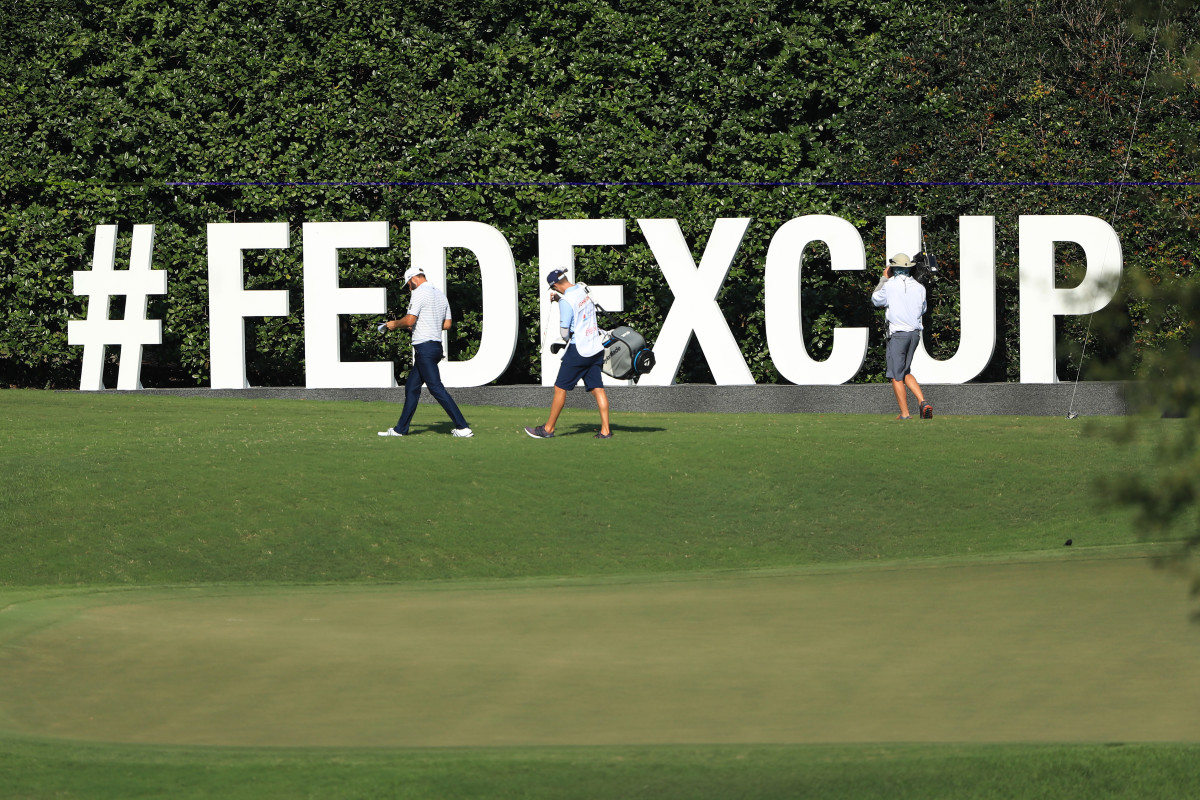
FedEx Cup points system misses the point
This article came about after one of the dozen or so times NBC hung that FedEx Cup standings graphic on us last weekend during the Players Championship. Instead of reaching for my phone or unscrewing myself from the couch for yet another Diet Mountain Dew, I took a decent look at the 10 names on my TV screen. What I saw immediately challenged my greater sense of reason.
Thanks in large part to a couple of top-10 finishes against ultra-weak fields at the end of the 2020 calendar year, Harris English occupied sixth place, nine spots ahead of Collin Morikawa, who had beaten the strongest non-major gathering of the season two weeks earlier. Much to his credit – way too much, you might say – English also earned 500 FedEx Cup points for his victory in January at the Tournament of Champions, which actually wasn’t a tournament of champions at all.
Just 23 of the 42 contestants that week had won a PGA Tour event during the 2019-20 campaign. Another eight got in for winning this past fall, which leaves 11 guys who went winless but were invited to Kapalua for finishing among the top 30 in last year’s FedEx Cup derby. English was one of those 11. Not only did he take full advantage of this opportunity by picking up his first triumph in more than seven years, but he received those 500 points for beating 41 fellow competitors.
Morikawa earned 550 for conquering a WGC field almost four times larger and exponentially deeper. Bryson DeChambeau collected the same amount under similar circumstances at Bay Hill a week later, and if those two players weren’t shortchanged, it’s only because English was ridiculously over-compensated.
In a world in which every stroke matters, where the importance of competitive equilibrium cannot be overstated and outrageous sums of money are distributed in wide intervals for the slimmest differences in performance, such indiscretions are a problem. The Tour sees fit to jam its FedEx Cup project down our throats in every telecast, searching for acceptance and recognition while ignoring the long-term value of credibility. This represents a small but significant example of why it has failed to generate traction with the public.
Viktor Hovland picks up the same reward for winning the Mayakoba Golf Classic as Brooks Koepka did for his triumph in the Phoenix Open? Nonsense. According to the Official World Golf Ranking, the strength-of-field rating in Mexico was 268, almost 200 lower than the 463 at TPC Scottsdale. Not all golf tournaments are created equal. Anything but, although Camp Ponte Vedra is willing to perpetuate such a myth to avoid alienating even its lowest tier of title sponsors.
The tail wags the dog, and the ship sails along. What’s interesting about the FedEx Cup point-allocation process is that the margins are very small – the difference between winning a major and claiming a standard Tour event is just 100 points – yet the separation in terms of overall prize money is massive. The $15 million purse at last week’s Players Championship was a whopping $11 million more than the payouts in the Dominican Republic and Bermuda, where Hudson Swafford and Brian Gay each made a paltry $720,000 for victories against what were by far the weakest fields all year.
That’s chump change at a trophy ceremony nowadays, but Swafford and Gay still got their 500-point allotments. Justin Thomas, meanwhile, received $2.7 million for winning the Players but only 600 FedEx Cup ducats – a 375-percent pay increase on a mere 20-percent bonus in courier credit. You needn’t hire a mathematician to recognize the discrepancy. Swafford and Gay got a lot more bang for their postseason buck than they deserved.
Both are virtually certain to qualify for the playoffs despite failing to register a top-20 finish in a combined 19 starts since, but winning is what should matter, even if it occurs without any regard whatsoever for whom you actually defeated. The FedEx Cup’s infrastructure has been flawed since its 2007 inception, leading to numerous changes in the formula and a preposterous 2,000-point prize to the champions of the first two playoff events. You could win the Masters, U.S. Open and British Open and still not equal the value of a triumph at the Northern Trust, courtesy of the Tour’s strident efforts to inject a bit of fake drama into those three weeks in late summer.
It’s silly, it’s stilted in the wrong direction, but most of all, the system mitigates the production of the game’s best players. The regular season is partial to those who play in a lot of tournaments and make a lot of cuts, which goes a long way toward identifying the Tour’s bloated, rank-and-file constituency. Most of the big boys barely play in the fall, which leaves them well behind in the standings when things finally heat up five months into the season. The inflated worth of all those autumn points does the product more harm than good. Still, the Tour would rather feed its middle class than cater to those who show up 17 or 18 times a year.
This is, after all, the same organization that basically killed the money list upon the FedEx Cup’s inception. Fifty-six players already have passed $1 million in earnings this season, which isn’t quite half over, putting 2021 well ahead of the coronavirus-shortened 2019-2020, when 91 guys reached seven digits, 63 of whom didn’t win a tournament. Even 14 years ago, the Tour was quick to recognize the bad optics that come with so many anonymous golfers hauling in so much dough, which is why the accumulation of points soon emerged as the official measure for the way things are today.
Jeez, I probably should have just gotten off the couch and grabbed another Diet Mountain Dew.
Sign up to receive the Morning Read newsletter, along with Where To Golf Next and The Equipment Insider.